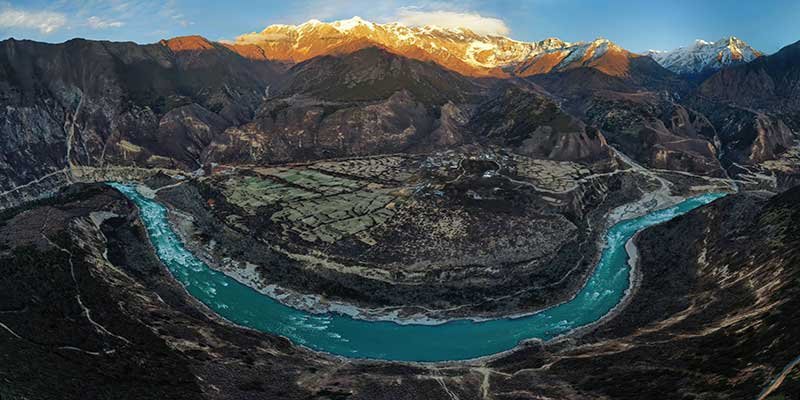China Begins Construction of World’s Largest Dam on Brahmaputra Near Arunachal Border
The ambitious project, located in the remote Medog County of Tibet, has sparked significant regional and international attention ..............

China has officially commenced construction of what is set to be the world’s largest dam on the Yarlung Tsangpo River, known as the Brahmaputra in India, near the border with Arunachal Pradesh.
The ambitious project, located in the remote Medog County of Tibet, has sparked significant regional and international attention due to its scale, environmental implications, and potential geopolitical ramifications.
The mega-dam, estimated to cost over $137 billion, is designed to generate approximately 300 billion kilowatt-hours of electricity annually, dwarfing the capacity of China’s Three Gorges Dam, currently the world’s largest hydropower project.
Also Read- Massive Landslide Disrupts NH-10 and Lava Road, Strands Commuters in Sikkim
Chinese state media hailed the project as a “milestone in sustainable energy,” emphasizing its potential to support China’s carbon neutrality goals by 2060. The dam’s location, however, just 40 kilometers from the Indian border, has raised concerns in New Delhi and downstream nations like India and Bangladesh, which rely heavily on the Brahmaputra for water supply and agriculture.
Indian officials have expressed apprehension about the dam’s potential to alter the river’s flow, which supports millions of livelihoods in Assam and Arunachal Pradesh.
“Any upstream intervention on the Brahmaputra could have far-reaching consequences for water security and flood management in India,” said a spokesperson for India’s Ministry of External Affairs.
Also Read- Violence Erupts During Eviction Drive in Goalpara; One Dead, Several Injured
Experts warn that the dam could reduce water availability during dry seasons and exacerbate flooding during monsoons, given China’s ability to control water release. Environmentalists have also sounded alarms over the project’s impact on the fragile Himalayan ecosystem.
The Yarlung Tsangpo Grand Canyon, the world’s deepest canyon, is a biodiversity hotspot, and construction could disrupt habitats of rare species, including the Bengal tiger and the red panda. Local Tibetan communities have reportedly voiced concerns over displacement, though Chinese authorities claim the project includes robust resettlement and compensation plans.
Analysts suggest the project could be a strategic move by Beijing to assert control over shared water resources, potentially giving China leverage in future negotiations.
Also Read- Rahul Gandhi Accuses Assam CM of Corruption, Himanta Biswa Sarma Hits Back in Heated Political Clash
Bangladesh, another downstream nation, has called for transparent data-sharing on the dam’s operations to mitigate risks of flooding and water scarcity.
China’s Ministry of Water Resources defended the project, stating it incorporates “advanced environmental safeguards” and will include mechanisms to ensure stable water flow for downstream countries.
However, specifics about the dam’s design, timeline, and water management protocols remain limited, fueling uncertainty.
The international community is closely monitoring the situation, with calls for multilateral dialogue under frameworks like the Mekong River Commission to address transboundary water issues. As construction progresses, the Brahmaputra dam is likely to remain a flashpoint in regional geopolitics, testing the delicate balance of cooperation and competition in South Asia.









